Special Report
Oscar Winning Movies That Didn't Turn a Profit
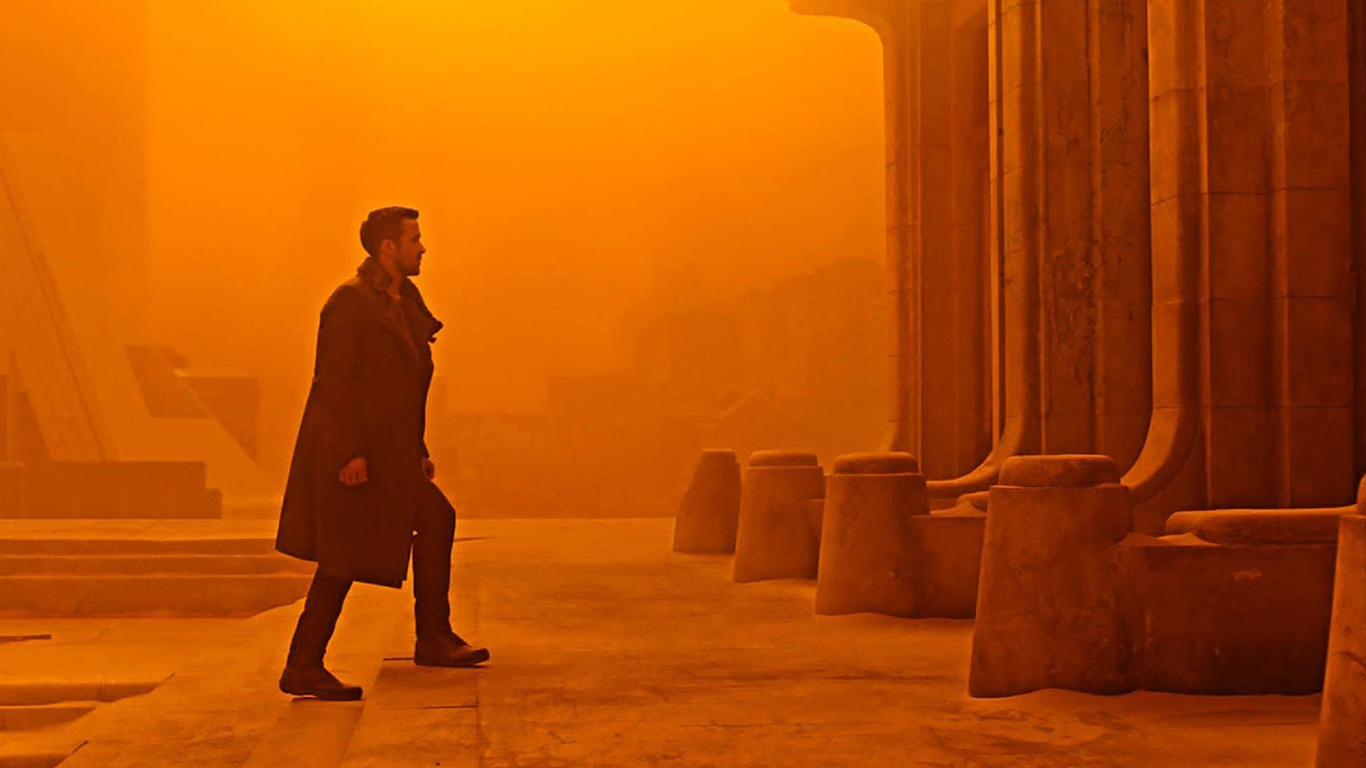
Published:
Last Updated:

Winning an Academy Award is one of the most prestigious achievements in filmmaking. And while Oscar-winning movies are often exceedingly popular among moviegoers, financial success is not a condition the Academy requires. Some movies that embody the level of excellence sought by the Academy fail to score big at the box office.
Generally, low-grossing, but not necessarily low-budget, films win less prominent awards than Best Picture. Instead, they excel in one specific area and win an award for Best Writing, Best Music, or Best Actress in a Supporting Role. While winning an Oscar in one of these categories is no small feat, it does not necessarily encourage ticket sales in the way a Best Picture win – or even nomination – does.
24/7 Wall St. has identified 25 Oscar-winning movies that didn’t turn a profit. These films cost more to produce than they earned in the domestic market.
Click here to see the Oscar winning movies that didn’t turn a profit.
Three of the Oscar-winning movies that didn’t turn a profit in the U.S. and Canada were some of the most expensive movies ever made that cost $150 million to make and were recognized by the Academy for their cinematography. The 2007 movie “The Golden Compass” had a production budget of $180 million and won the award for Best Achievement in Visual Effects. These films suggest that while large sums of money can be used to create an extraordinary visual experience, this does not necessarily translate into a movie with wide appeal or a well-rounded cinematic experience.
To determine the Oscar-winning movies that didn’t turn a profit, 24/7 Wall St. reviewed estimated production budgets and domestic box office earnings for every film that has won an Academy Award in any category – including those awarded to one specific member of a film’s cast or crew – since 1929. This data was provided by the Internet Movie Database. Movies for which budget or box office data were not available were excluded from consideration.

25. Mighty Aphrodite (1995)
> Award: Best Actress in a Supporting Role: Mira Sorvino
> Estimated production budget: $15 million
> Domestic box office gross: $6.7 million
Mira Sorvino’s performance in this Woody Allen comedy — frequently referred to as a “minor” film by critics — earned the actress her sole Oscar.
[in-text-ad]

24. Spirited Away (2001)
> Award: Best Animated Feature
> Estimated production budget: $19 million
> Domestic box office gross: $10.1 million
Originally released in Japan, “Spirited Away” failed to gross its production budget in the U.S. and Canada. Still, the film has a strong following with 97% of critics and 96% of audience members giving it favorable reviews on Rotten Tomatoes.

23. Girl, Interrupted (1999)
> Award: Best Actress in a Supporting Role: Angelina Jolie
> Estimated production budget: $40 million
> Domestic box office gross: $28.9 million
Angelina Jolie’s award for Best Actress in a Supporting Role was this 1999 drama’s only Academy Award. The film received mixed reviews, with just over half of critics liking it on Rotten Tomatoes.
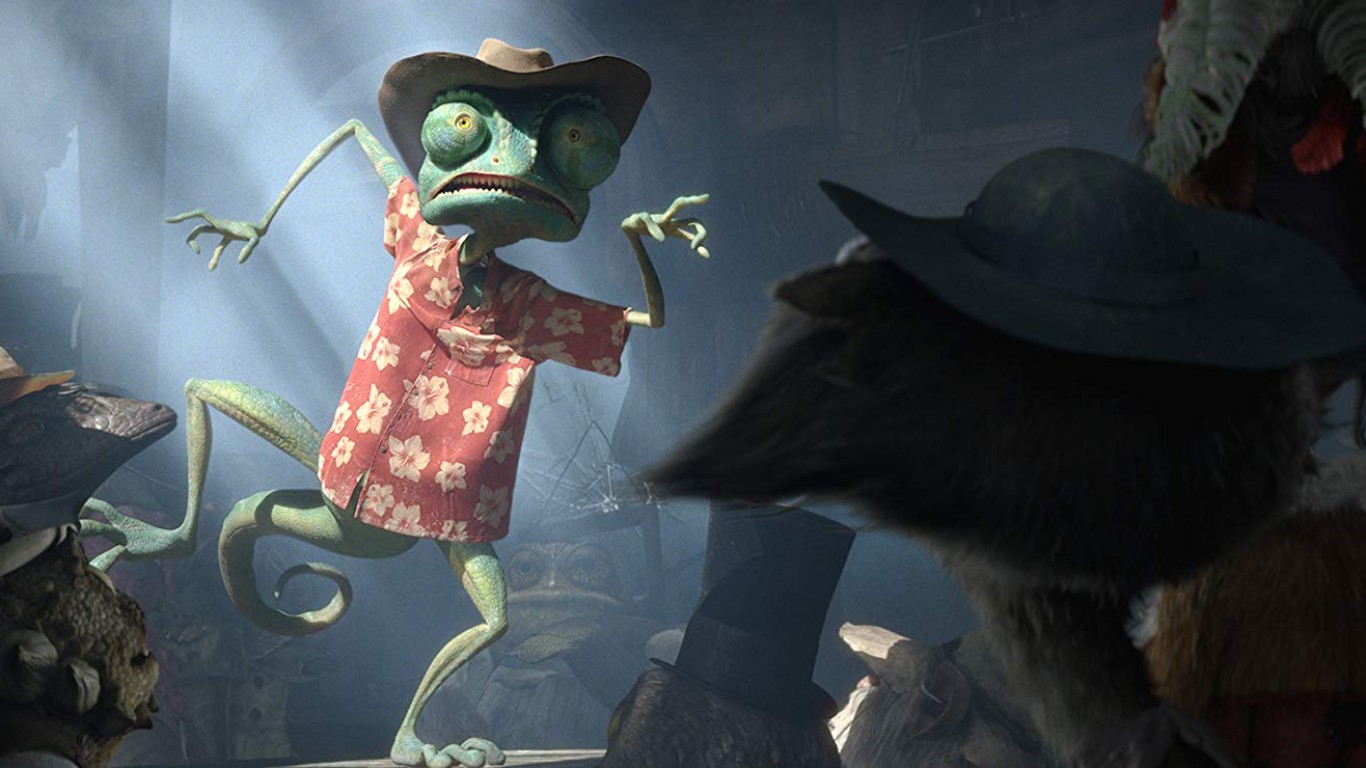
22. Rango (2011)
> Award: Best Animated Feature Film of the Year
> Estimated production budget: $135 million
> Domestic box office gross: $123.5 million
Along with “Spirited Away,” Rango is one of two films that didn’t turn a profit that won Best Animated Feature Film of the Year at the Oscars. The movie had an exceptionally large reported budget of $135 million.
[in-text-ad-2]

21. Ed Wood (1994)
> Award: Best Makeup, Best Actor in a Supporting Role: Martin Landau
> Estimated production budget: $18 million
> Domestic box office gross: $5.9 million
Tim Burton’s “Ed Wood” received rave reviews from critics in addition to its two Academy Awards. Yet it grossed less than a third of its production budget in the U.S. and Canada.

20. Blue Sky (1994)
> Award: Best Actress in a Leading Role: Jessica Lange
> Estimated production budget: $16 million
> Domestic box office gross: $3.4 million
“Blue Sky” was withheld from release by its studio until a few years after director Tony Richardson’s death. Lead actress Jessica Lange, therefore, didn’t receive her Best Actress award until 1995.
[in-text-ad]
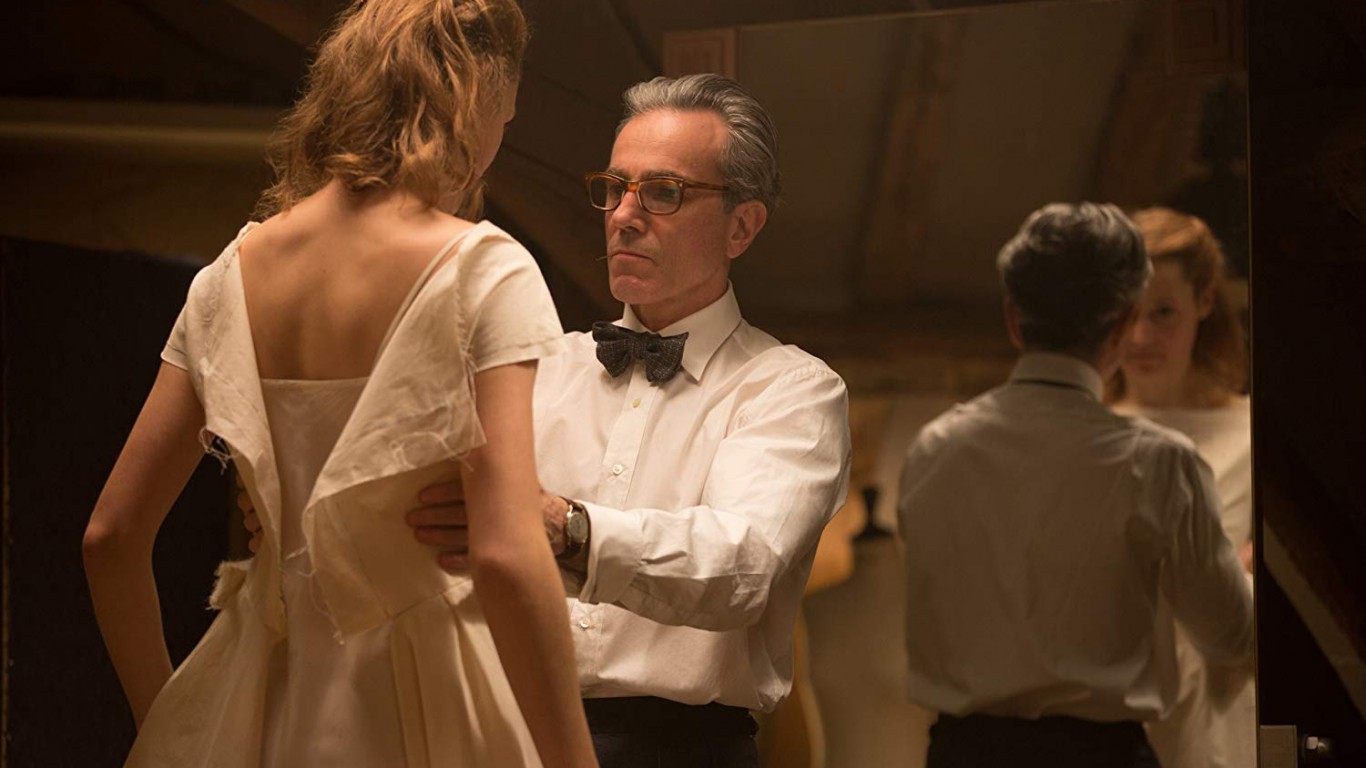
19. Phantom Thread (2017)
> Award: Best Achievement in Costume Design
> Estimated production budget: $35 million
> Domestic box office gross: $21.0 million
Paul Thomas Anderson’s “Phantom Thread” tells the story of a dressmaker in 1950s London. This subject matter was perhaps not intriguing enough for U.S. audiences.

18. Restoration (1995)
> Award: Best Art Direction-Set Decoration; Best Costume Design
> Estimated production budget: $19 million
> Domestic box office gross: $4.1 million
Despite its two Academy Award wins, the 1995 historical drama “Restoration” failed to have a major impact among audiences. The two and a half-hour movie grossed just over $4 million domestically.

17. The Abyss (1989)
> Award: Best Effects, Visual Effects
> Estimated production budget: $70 million
> Domestic box office gross: $54.5 million
Director James Cameron proved his cinematic eye for visuals long before “Avatar,” when his 1989 “The Abyss” took home the award for Best Effects. He would have better financial success, however, with later releases such as “Titanic.”
[in-text-ad-2]

16. The Ghost and the Darkness (1996)
> Award: Best Effects, Sound Effects Editing
> Estimated production budget: $55 million
> Domestic box office gross: $38.6 million
“The Ghost and the Darkness” was not a huge hit among critics, receiving positive reviews from just over half of critics on Rotten Tomatoes. No one can blame supervising sound editor Bruce Stambler, who won the award for his sound effects editing on the film.
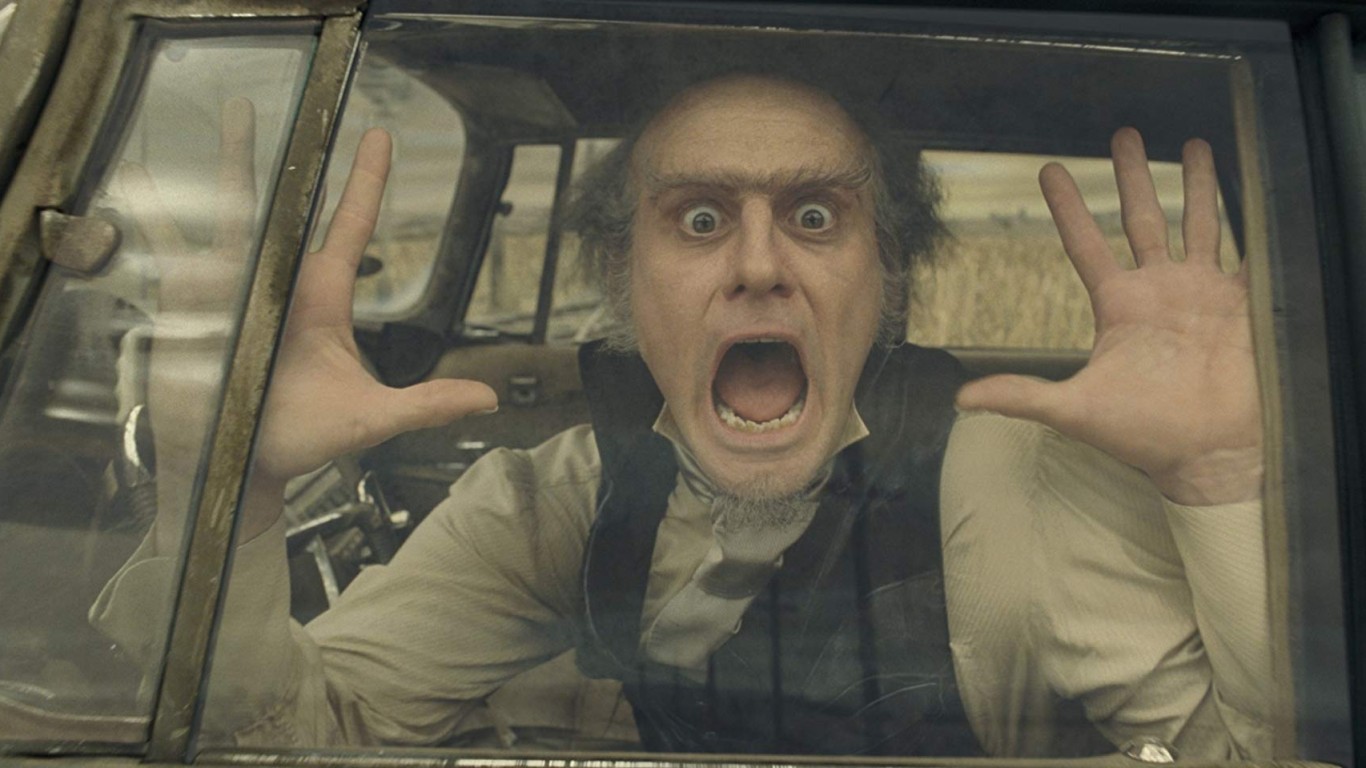
15. Lemony Snicket’s A Series of Unfortunate Events (2004)
> Award: Best Achievement in Makeup
> Estimated production budget: $140 million
> Domestic box office gross: $118.6 million
The 2004 film grossed more than $118 million at the domestic box office, making it the 18th top grossing film of that year. Unfortunately, the film cost a whopping $140 million to produce.
[in-text-ad]
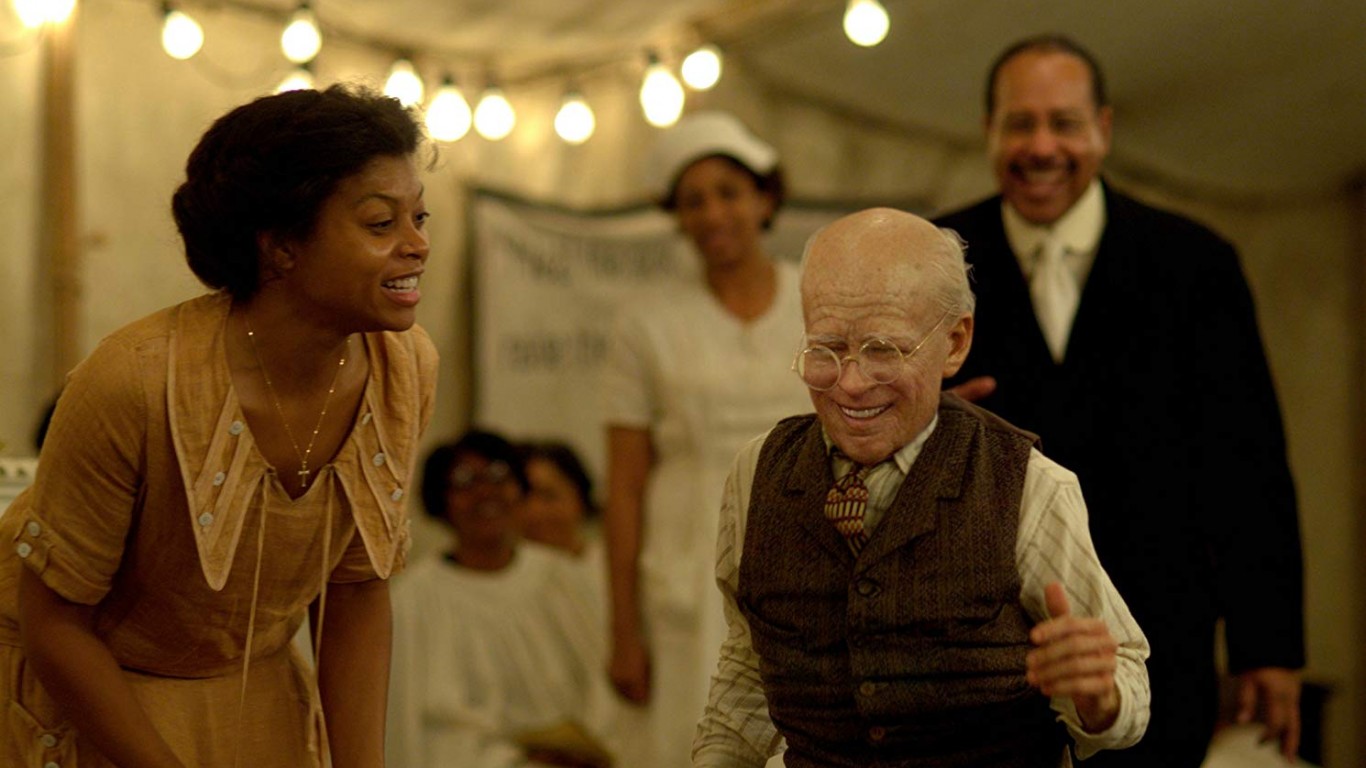
14. The Curious Case of Benjamin Button (2008)
> Award: Best Achievement in Art Direction; Best Achievement in Makeup; Best Achievement in Visual Effects
> Estimated production budget: $150 million
> Domestic box office gross: $127.5 million
“The Curious Case of Benjamin Button,” directed by David Fincher, did exceptionally well at the Academy Awards, receiving 13 nominations, three of which it won. Audiences may have had less patience with the film, which ran for a total of two hours and 46 minutes.
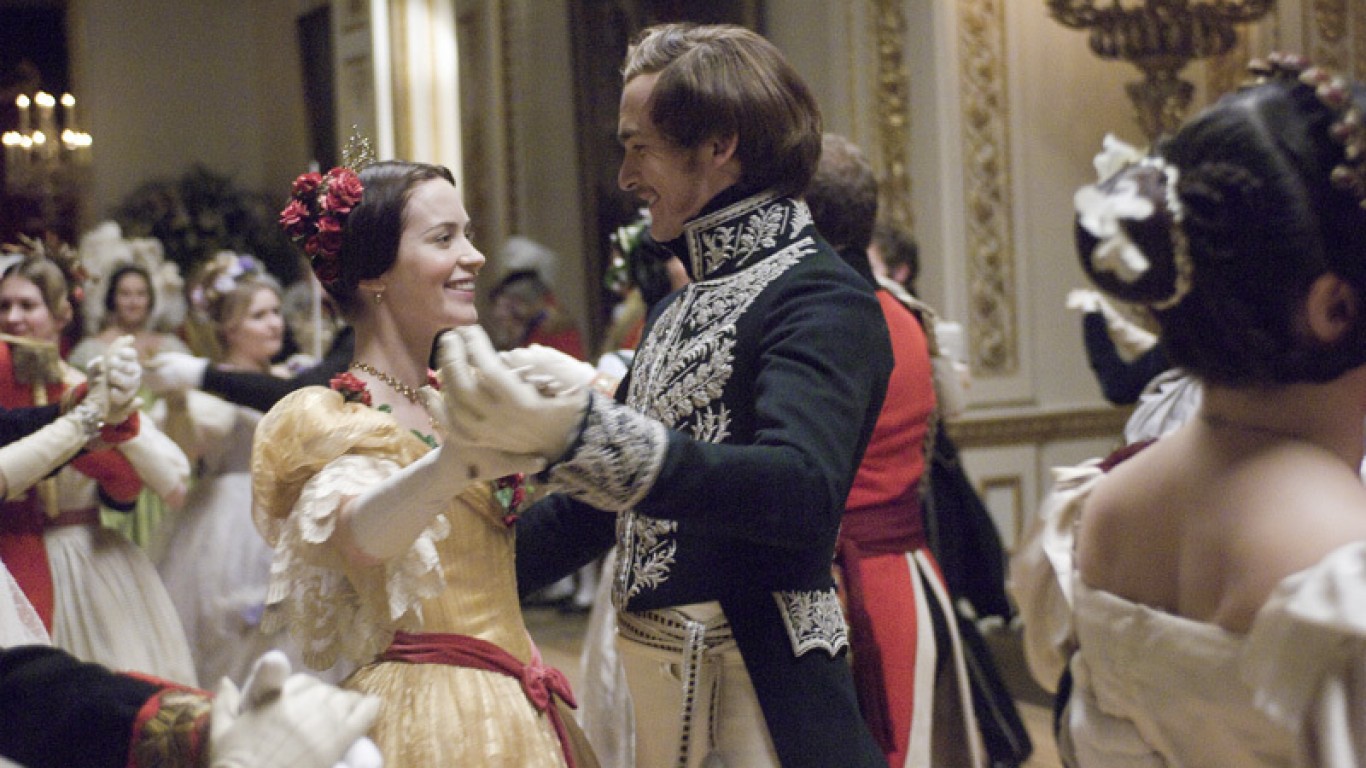
13. The Young Victoria (2009)
> Award: Best Achievement in Costume Design
> Estimated production budget: $35 million
> Domestic box office gross: $11.0 million
Historical drama “The Young Victoria” grossed just over $260,000 on its opening weekend in the U.S. and Canada and $11 million in total. The movie’s extravagant wardrobes, however, earned it the Academy Award for Best Achievement in Costume Design.
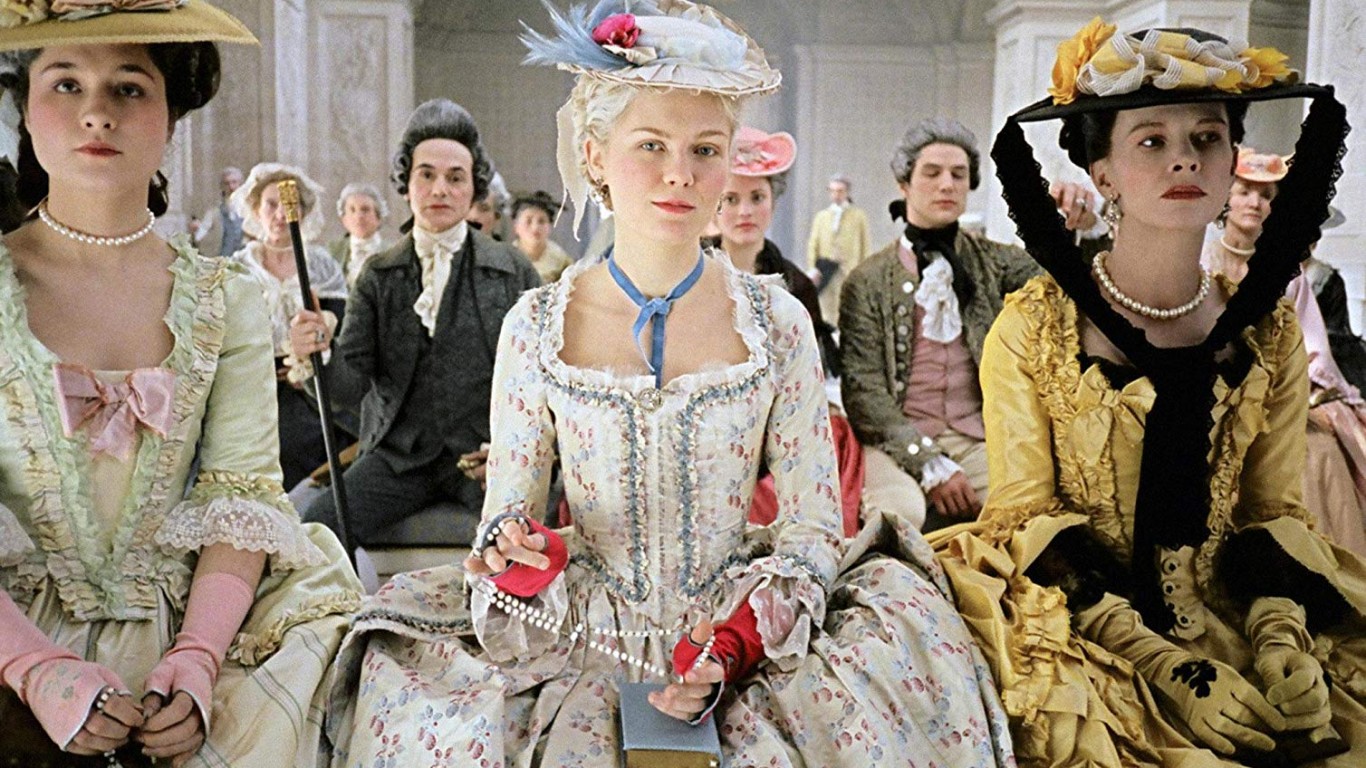
12. Marie Antoinette (2006)
> Award: Best Achievement in Costume Design
> Estimated production budget: $40 million
> Domestic box office gross: $16.0 million
Sofia Coppola’s “Marie Antoinette” is another historical drama that won an Oscar for its costume design. Audiences were lukewarm with regard to the full product, however, as was reflected in its middling box office returns.
[in-text-ad-2]
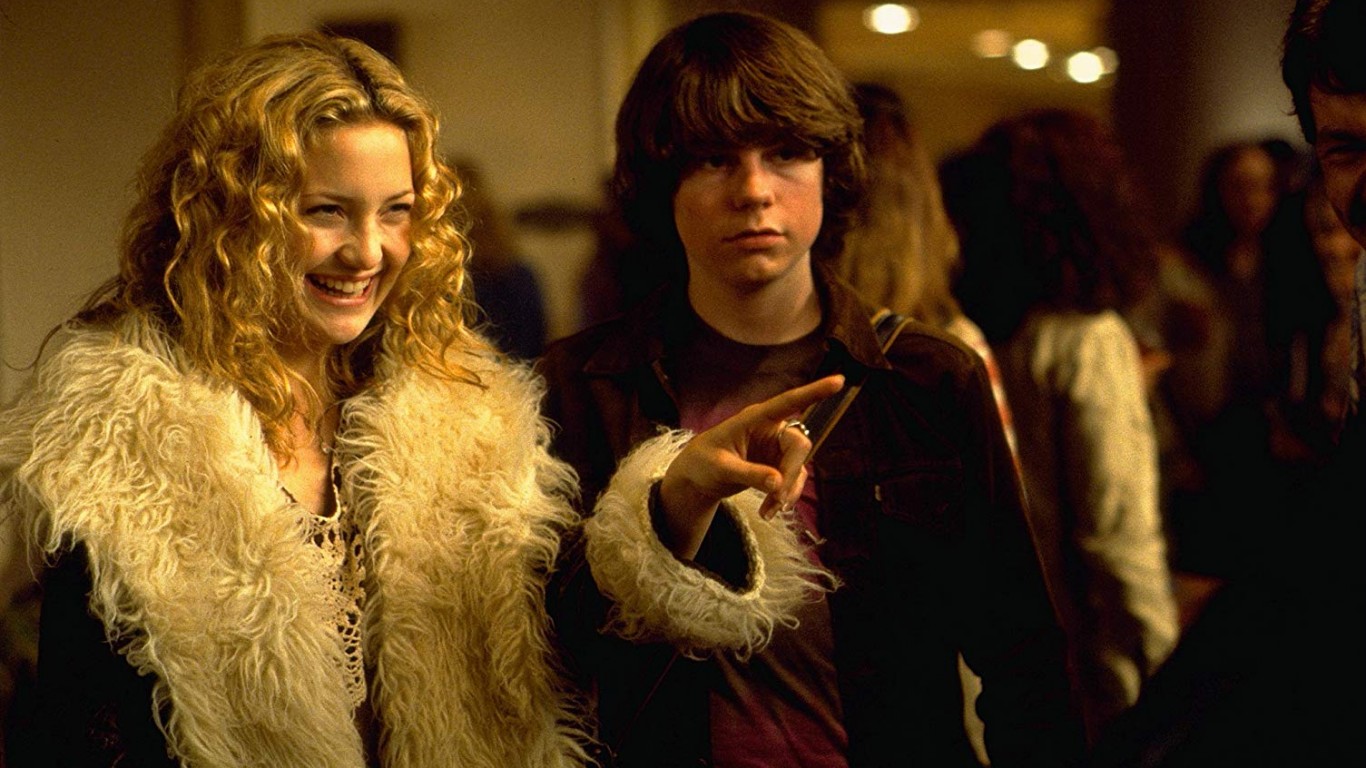
11. Almost Famous (2000)
> Award: Best Writing, Screenplay Written Directly for the Screen
> Estimated production budget: $60 million
> Domestic box office gross: $32.5 million
Although “Almost Famous” bombed at the box office, it generated mostly positive reviews among critics who often noted the film’s screenplay, for which it won an Oscar.

10. Memoirs of a Geisha (2005)
> Award: Best Achievement in Cinematography; Best Achievement in Art Direction; Best Achievement in Costume Design
> Estimated production budget: $85 million
> Domestic box office gross: $57.5 million
Despite six total Oscar nominations and three wins, “Memoirs of a Geisha” received numerous poor reviews, resulting in a 35% approval rating on Rotten Tomatoes. This critical reaction could be partially to blame for the film’s disappointing performance in the U.S. and Canada.
[in-text-ad]

9. What Dreams May Come (1998)
> Award: Best Effects, Visual Effects
> Estimated production budget: $85 million
> Domestic box office gross: $55.5 million
“What Dreams May Come” — starring Robin Williams and Cuba Gooding Jr. — received mixed reviews from critics. Most agreed on the film’s visual merits, however, which were rewarded with the Oscar for Best Effects, Visual Effects.
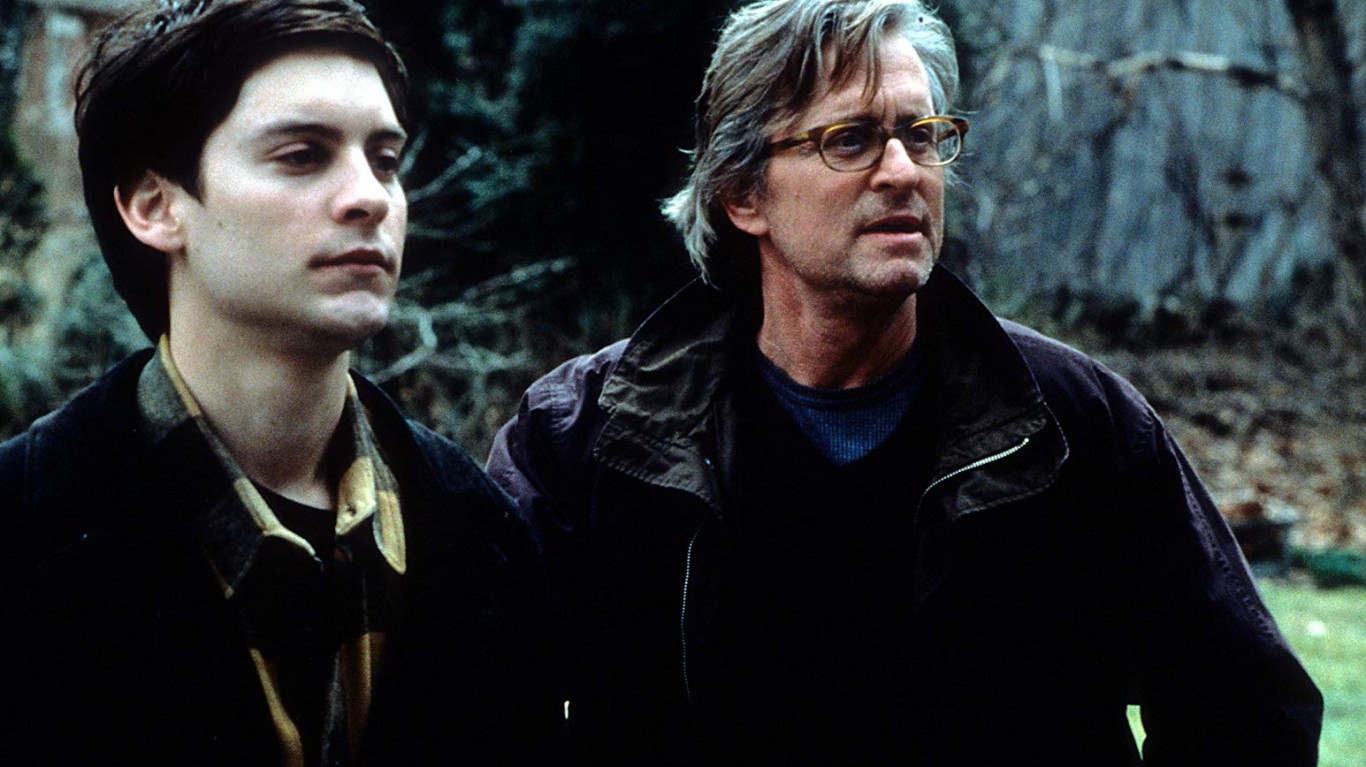
8. Wonder Boys (2000)
> Award: Best Music, Original Song
> Estimated production budget: $55 million
> Domestic box office gross: $19.4 million
“Wonder Boys,” starring Michael Douglas, one of the most popular Oscar winners of all time, and Tobey Maguire, grossed less than half of its production budget at the domestic box office. It did receive recognition from the Academy for the inclusion of the Bob Dylan original song “Things Have Changed.”
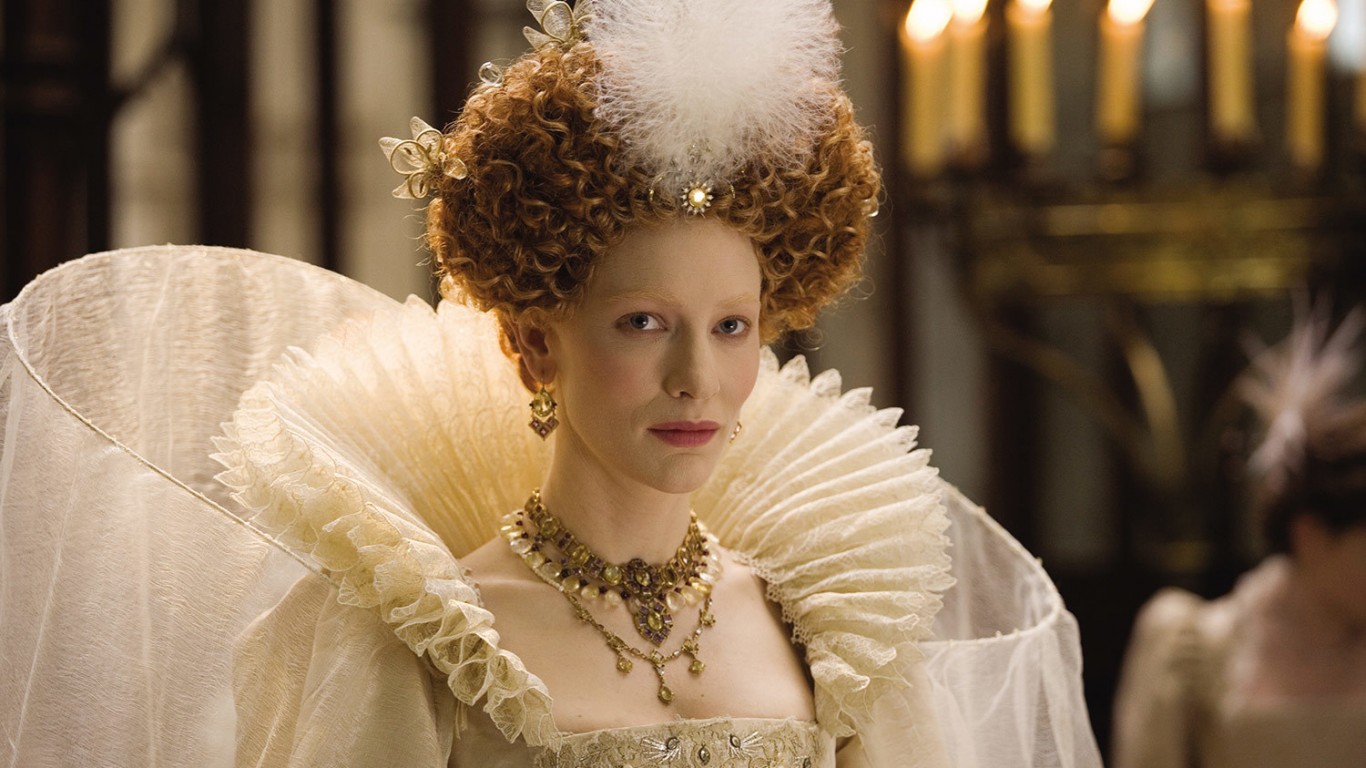
7. Elizabeth: The Golden Age (2007)
> Award: Best Achievement in Costume Design
> Estimated production budget: $55 million
> Domestic box office gross: $16.3 million
Although the film featured exceptional costume design, “Elizabeth: The Golden Age” failed to blow away critics or audiences, who gave the film 34% and 59% approval ratings on Rotten Tomatoes, respectively.
[in-text-ad-2]

6. Spectre (2015)
> Award: Best Achievement in Music Written for Motion Pictures, Original Song
> Estimated production budget: $245 million
> Domestic box office gross: $200.1 million
The 24th James Bond film, “Spectre” cost more and earned less in the U.S. and Canada than the franchise’s preceding film “Skyfall.” The latter film reportedly cost $200 million to produce and grossed $304 million. It also managed to win two Oscars, compared with the one “Spectre” won.

5. Master and Commander: The Far Side of the World (2003)
> Award: Best Cinematography; Best Sound Editing
> Estimated production budget: $150 million
> Domestic box office gross: $93.9 million
The Peter Weir-directed “Master and Commander: The Far Side of the World” is visually stunning thanks in large part to the work of cinematographer Russell Boyd, whose work on the film won him the Oscar for Best Cinematography. The movie also scored a win for Best Sound Editing.
[in-text-ad]
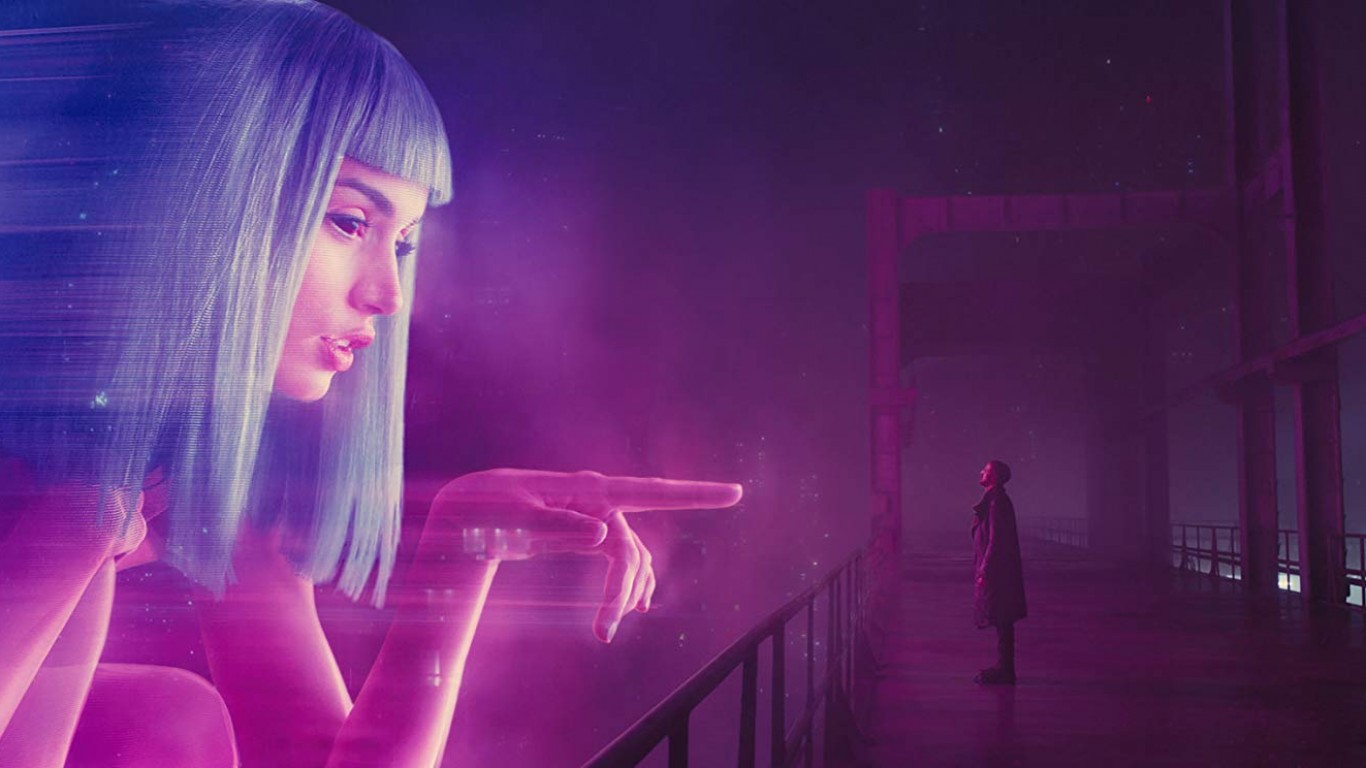
4. Blade Runner 2049 (2017)
> Award: Best Achievement in Cinematography; Best Achievement in Visual Effects
> Estimated production budget: $150 million
> Domestic box office gross: $92.1 million
Despite generally favorable reviews, the $150 million follow-up to “Blade Runner” grossed just over $92 million in the U.S. and Canada. Longtime Coen brothers collaborator Richard Deakins was recognized by the Academy for his cinematography, however, as was the movie’s visual effects team.
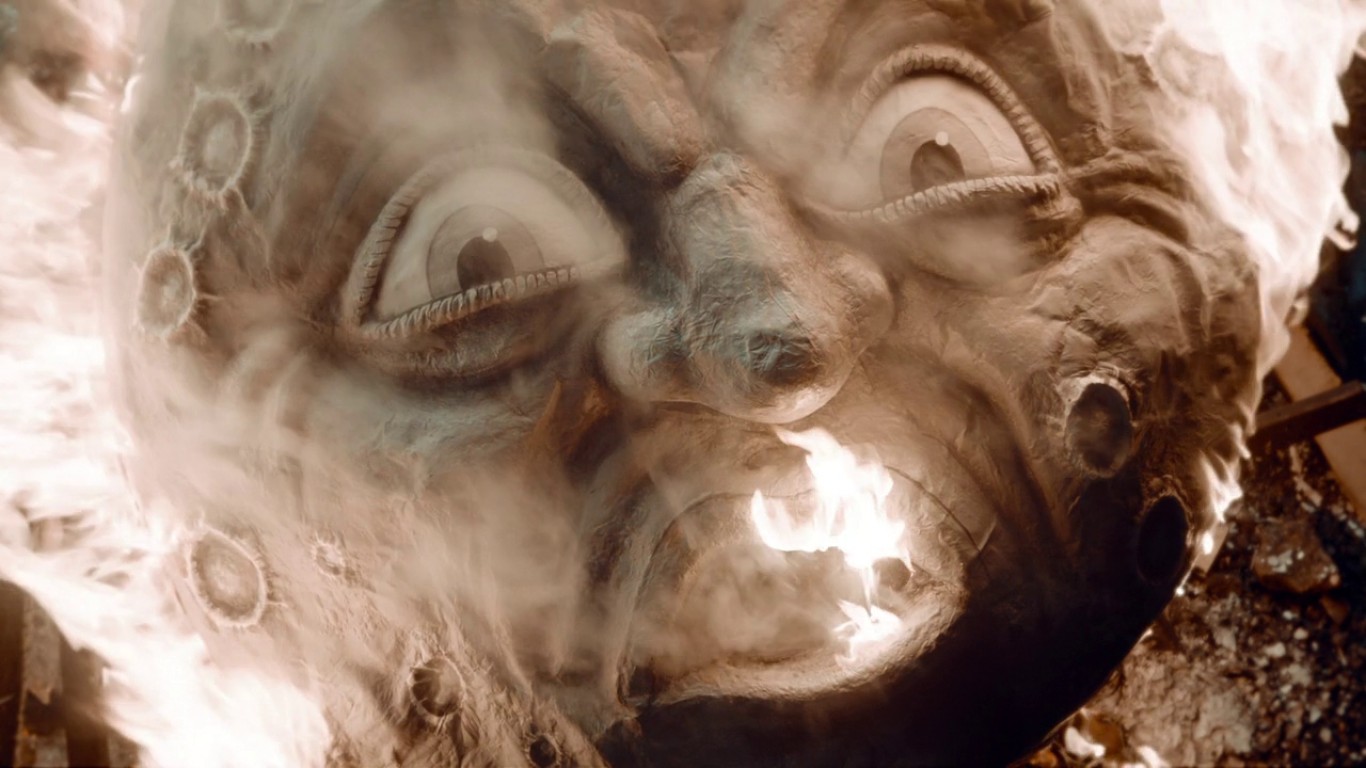
3. Hugo (2011)
> Award: Best Achievement in Cinematography; Best Achievement in Sound Mixing; Best Achievement in Sound Editing; Best Achievement in Visual Effects; Best Achievement in Art Direction
> Estimated production budget: $150 million
> Domestic box office gross: $73.9 million
Martin Scorsese’s “Hugo” did extremely well at the 2012 Oscars, winning five awards and being nominated for an additional six, including Best Picture. Yet the 3D movie underperformed at the box office, due in part to audiences being more drawn to “The Muppets” and “The Twilight Saga: Breaking Dawn – Part 1.”
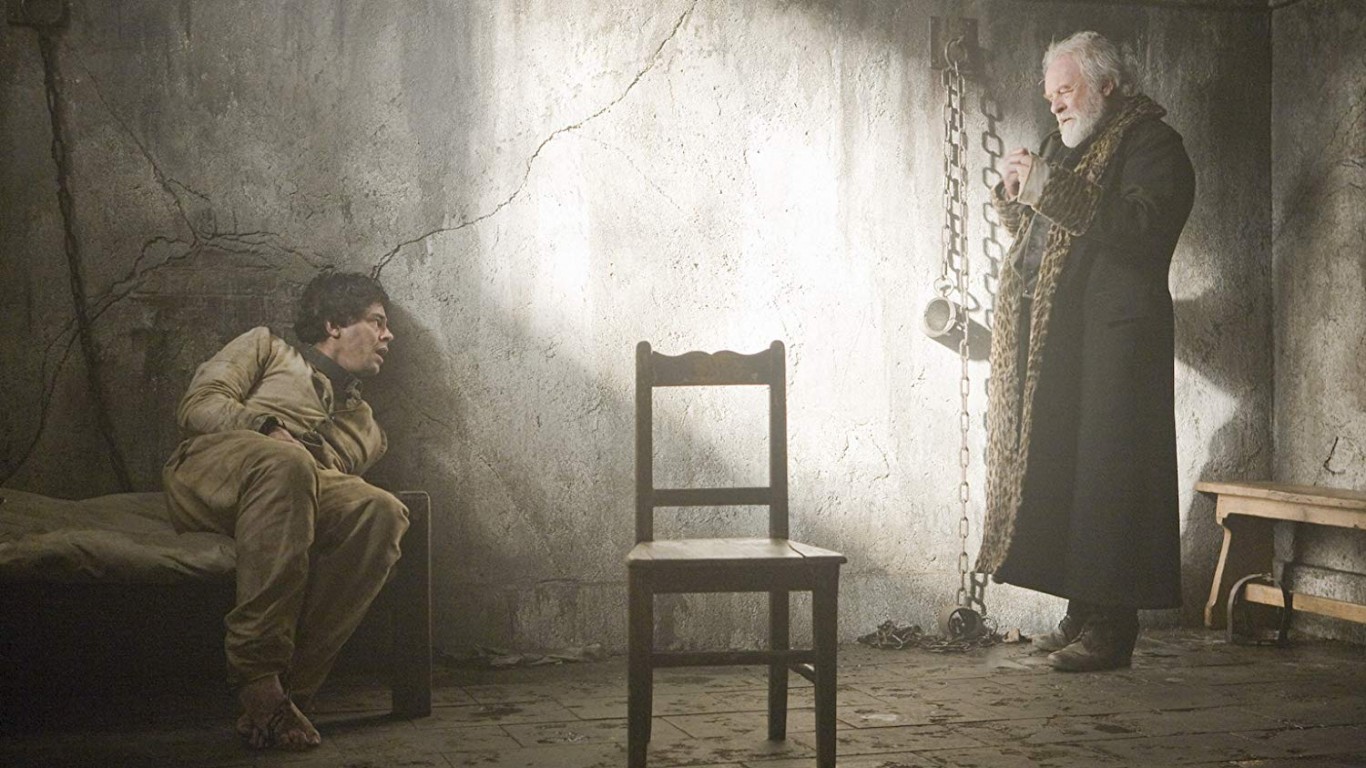
2. The Wolfman (2010)
> Award: Best Achievement in Makeup
> Estimated production budget: $150 million
> Domestic box office gross: $62.0 million
The 2010 updated version of “The Wolfman” grossed just $62 million at the domestic box office against a bloated budget of $150 million. Accomplished makeup artists Rick Baker and Dave Elsey were still awarded for their first-rate work on the movie.
[in-text-ad-2]

1. The Golden Compass (2007)
> Award: Best Achievement in Visual Effects
> Estimated production budget: $180 million
> Domestic box office gross: $70.1 million
Fantasy film “The Golden Compass” failed miserably at the domestic box office, grossing a fraction of its reported $180 million budget. The film was plagued with controversies, including boycotts and protests from religious groups such as the Catholic League due to themes critical of the Catholic Church. The movie’s box office failure contributed to studio New Line Cinema’s being absorbed into Warner Bros. Pictures.
Thank you for reading! Have some feedback for us?
Contact the 24/7 Wall St. editorial team.